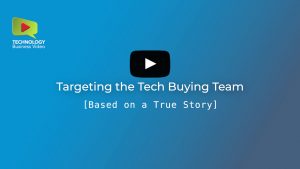Speeding up the customer journey sometimes looks like an iffy proposition. Gartner’s version of the modern customers journey below makes you wonder how it could ever be completed. Yet, businesses are demanding even
for software purchases. If you agree that video is one of the fastest ways to move ideas forward, then it makes sense to look into how can we use video to help buying groups evaluate solutions.
- 81% of B2B buyers prefer digital channels to face-to-face encounters
- 63% of B2B buyers disregard content that is not personalized to their interests, needs, industry, or role
- More than 80% of the buying journey it taken up with independent research and buying group discussions
These findings are drawn from a Netline eBook,
Nology – State of B2B Marketing for Global Tech, [
download link]. The findings point to this conclusion “the breadth and depth of your content is the single most important variable in your marketing strategy.”
Technology product videos for speeding up the customer journey
Today’s customers want videos throughout the buying journey. Survey respondents said they watch product information videos (81%), videos about trends and predictions (59%), and real-world scenarios or case studies (56% ).
Business decision makers are more likely to watch advice or tutorial videos “with actionable takeaways.” IT is more likely to watch videos reporting on research summaries or in industry trends.
To increase the breadth and depth of a video library, real-world scenarios and case studies are good subjects, because viewers like to learn from stories. The everyday issues tech buyers care about — onboarding processes, learning resources, ease of integration, and the like — make humdrum reading on the page but can be brought to life in video.
Five minutes appears to be the upper limit on attention spans for these types of videos.
| Advice or tutorials (actionable takeaways) |
4–5 mins |
| Product information |
2–3 mins |
| Real-world scenarios / case studies |
3–4 mins |
| Research summaries |
2–3 mins |
| Trends and predictions |
2–3 mins |
Demos and webinars
Webinars continue to be a good source of product information. Respondents said they’d prefer to hear from several speakers, not just one, and agreed that 30–60 minutes is a good length. The more show-and-tell, the better. Recorded webinars are easier to watch if they include clickable chapter titles and edit out irrelevant introductory material.
Training resources
Training resources represent a key differentiator for software buyers. First-rate training materials often contain videos resources that can be highlighted in videos describing why your implementation and support services contribute to making yours the winning solution.
Chatbots
70% of respondents participating in the survey were using chatbots when this survey was conducted — prior to the recent explosion of interest in AI. Clearly, we should all be thinking about what kinds of video chatbots and other AI tools we will want to use. AIs learn largely by reading text — another reminder that videos should be published with transcripts and captions.
The takeaway
Buyers want videos they can learn from and share, containing information that is immediately useful for evaluating vendors and making decisions. They are looking for videos that are more than “explainers” in name only.
 Here are a few things we know from about buying decision-makers:
Here are a few things we know from about buying decision-makers:
 Here are a few things we know from about buying decision-makers:
Here are a few things we know from about buying decision-makers:




